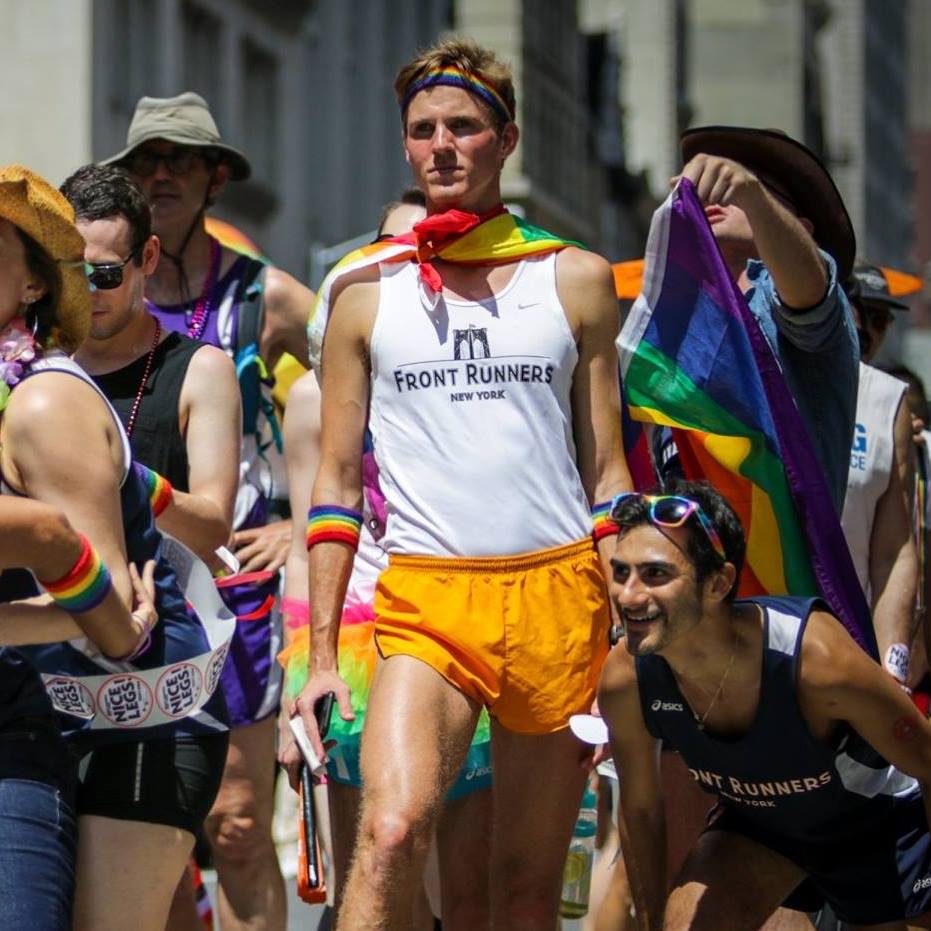Three years ago, I made it my mission to read the gay literary canon. I myself had come out not long before, and there were many moments when I felt like I was flipping the pages of my own story as the characters and I tiptoed and tumbled together into gay culture and community.
Since then, I have indulged in the gay Austenian charm of E.M. Forster’s Maurice and walked the streets of New York with the poet Frank O’Hara and followed in the footsteps of The Frontrunner’s Billy Sive and languished through humid summer days beside Call My By Your Name’s Elio and journeyed to Seattle with Jim from The City and the Pillar. They have been welcome company. They have been my literary squad.
But I have lived and learned beyond their final pages, and lately I have begun to wonder if they have worn out their welcome. I wonder if my squad has been such a great influence. Characters that in their time were earth-shattering now rumble with unsavory aftershocks, and I must grapple with whether or not these protagonists are worth rescuing from the rubble.
There are obvious marks against my most cherished characters: they engage in relationships that inappropriately breach divides of age or authority, they are overwhelmingly white and affluent, and they often act out in violent or manipulative ways. (To be fair, they are characters in novels!)
However, as I have gotten to know these young men, there is one thing that has troubled me most: their scrutiny, skepticism, and outright vilification of effeminacy.
The argument can be made that during the mid-twentieth century when many of these groundbreaking novels were first published, it was important to display gay men as virile, masculine, or workaday. In an era when LGBTQ people were othered and declared “queer,” it was an important point to make that a gay man could be your rugged track coach or the all-American boy down the road or a soldier bleeding for your freedom. Everyone knew that artistic and effeminate men could be gay, but these protagonists proved that anyone could be. This seems like a winning approach. Progress is achieved when we break stereotypes and defy expectations. Right?
However, where these novels fall short is not necessarily in how they choose their champions but rather how they select their villains. This can be seen in Mary Renault’s 1953 classic The Charioteer. In this novel, Laurie, a British WWII veteran injured at Dunkirk, recovers in the British countryside and finds himself sucked unexpectedly and uncomfortably into the covert gay culture there.
In a conversation with his romantic interest and butch boat captain, Ralph, Laurie refers back to his first brush with gay culture while at Oxford:
“[Charles] kept telling me I was queer, and I’d never heard it called that before and didn’t like it. The word, I mean. Shutting you away, somehow; roping you off with a lot of people you don’t feel much in common with, half of whom hate the other half anyway, and just keep together so that they can lean up against each other for support. I don’t think I’ve ever tried to put all this into words before; am I talking nonsense?” (Renault 152)
In this passage, rather than place his queasiness at the feet of a moralistic British society or acknowledge his own internalized prejudices, Laurie instead identifies the gay community as his aggressor—trying to force him into a narrow gay identity.
Other scenes confirm this narrow identity to be distinctly effeminate. For example, at a birthday party for a gay man, Laurie describes his host as unnervingly feminine: “[Alec] got up. For the first time, Laurie perceived in his movements a kind of reticent, controlled delicacy, like that of a well-bred woman who is usually aware of making, without vulgar emphasis, the right impression” (Renault 118). Alec’s mere passage through space is viewed as a self-conscious and unnatural exercise.
Laurie applies this perversion to the whole party a few pages later:
[Laurie] suddenly saw quite clearly what it was he had been running away from; why he had refused Sandy’s first invitation, and what the trouble had been with Charles. It was also the trouble, he perceived, with nine-tenths of the people here tonight. They were specialists. They had not merely accepted their limitations, as Laurie was ready to accept his, loyal to his humanity if not to his sex, and bringing an extra humility to the hard study of human experience. They had identified themselves with their limitations; they were making a career of them. They had turned from all other reality, and curled up in them snugly, as in a womb.” (Renault 132)
In this passage, Laurie identifies homosexuality as a burden he is willing to bear (strong, like a man), while the gaggle of other gays indulge their backward nature.
In part, this is difficult for me to read because I can understand it. I remember a time when I clung to my athlete status and cringed when someone called me “gurl” and refused to succumb to RuPaul’s Drag Race. I desperately did not want to be reduced to a stereotype.
Still today, I’m occasionally uncomfortable when other queer people instinctively extrapolate their weekend activities or reclaimed words or perspectives on sex to include me. I’d like to think my discomfort stems not from a false sense of superiority but simply from a desire for the space to retain individuality within the gay community. I think that there are plenty of things within the gay community that deserve to be challenged and criticized; I just wish that my precious protagonists didn’t conflate these flaws with effeminacy.
At the end of the birthday party, Laurie finds his effeminate host, Sandy, in the bathtub with slit wrists and observes:
There was no doubt that Sandy looked a disgusting spectacle, with his pale damp face, his head lolling on the bath mat, his watery eyes upturned. He had thrown off the dressing-gown as he moved, and Ralph with a gesture of distaste twitched it back again….Clammy, slippery, and repulsive to the touch, he kept sliding through their hands like a fish and subsiding on the mat again. (Renault 144-145)
Sandy’s hysterics and lack of a backbone are tied directly to his gowned body and distinct dearth of masculinity. For the remainder of the novel, the society of effeminite gay men is referred to as “Sandy’s lot.”
Meanwhile, in Gore Vidal’s The City and the Pillar, all-American boy Jim attends a gay New Year’s Eve party in New York City and meets his own repulsive host, Nicholas J. Rolloson: “Rolly welcomed them enthusiastically; he wore a scarlet blazer with a crest. As he moved, breasts jiggled beneath a pale yellow silk shirt. The handshake was predictably damp” (Vidal 158). Rolloson is frivolous, hypocritical, and gossipy—all qualities worth critiquing—but is also applied with every effeminate descriptor Jim can muster. In the next paragraph, the entire assembly of gay men is referred to as “Rolloson’s army” (Vidal 158). The message is clear: Jim is under attack by the corroding influence of effeminacy.
Even my beloved Elio from André Aciman’s much more modern Call Me By Your Name makes this unfair correlation when sitting in his bedroom window, waiting for his first tryst with Oliver and observing his parents’ dinner guests, a gay couple from Chicago:
…both showed up wearing purple shirts. They had both stepped out from either side of the cab at the same time and each carried a bunch of white flowers in his hand. They looked, as my father must have realized, like a flowery, gussied-up version of Tintin’s Thomson and Thompson twins.
I wondered what their life together was like.
It seemed strange to be counting the minutes during supper, shadowed by the thought that tonight I had more in common with Tintin’s twins than with my parents or anyone else in my world.
I looked at them, wondering who was top and who was bottom, Tweedle-Dee or Tweedle-Dum. (Aciman 125)
This adult gay couple is rendered simultaneously infantile and effeminate by an Elio who fears having anything in common with them. Thus, in an attempt to expand the way that society views gay people, my literary squad has inadvertently created the view that there are good and bad ways to be gay and thoroughly villainized effeminacy in the process. That’s not what they were trying to do, right?
It is a fresh October day in Seattle, and I am running around Lake Union with friends. I am musing, as I often do, about my literary crew of gay protagonists—complex young men who wrestle with effeminacy and race and class and questionable relationships and who don’t always come out looking like winners.
And yet, I profess my love for them anyway.
And yet, when Rueben points a painted nail at me, asserts, “We don’t need those stories,” and relays a multicolored cadre of new queer characters to consider, I cannot help but wonder if some friends are best left in past chapters.
Works Cited
Aciman, André. Call Me By Your Name. Picador/Farrar, Straus and Giroux, 2017.
Renault, Mary. The Charioteer. Random House, 2004.
Vidal, Gore. The City and the Pillar: a Novel. Vintage International, 2003.

Gabe Gunnink (’14) lives in Seattle, where he works for a European travel company and gawks at the landscapes and skylines surrounding him. In his free time, he enjoys practicing Portuguese under his breath on city buses, running far enough to justify eating an entire pan of cinnamon rolls, and faithfully implementing Oxford commas.









I am ALWAYS up for literary analysis! You note that another problem is how the protagonists are overwhelmingly white and wealthy. I wonder, are there similar passages featuring LGBTQ people of color, or those who are impoverished, or is it something that the authors did not even know to address? It’s always interesting to look at who is included, but just to be mocked or villainized, and who is not allowed through the door. This also reminded me of the new epic play, The Inheritance (Matthew Lopez), based on EM Forster’s “Howards End.” It sounded like it might be wrestling with some of the same questions you are here.
Hi, Hope!
Thanks for reading!
Quite frankly, many of the classic LGBTQ novels I’ve read have likely been dubbed “classics” because they are overwhelmingly by white and male authors. Also, unsurprisingly, many of them take place in white and affluent societies, so no explicit mentions of people of color jump to mind in the novels I mentioned in this essay.
That said, there is a positively portrayed effeminate black character in one of my other favorite gay novels, “The Frontrunner,” and Alan Hollinghurst’s classic “The Line of Beauty” features a young white protagonist living with an aristocratic family and beginning a relationship with a black man.
Fortunately, there are many more modern works that center queer characters of color. In particular, I’ve heard wonderful things about “A Little Life” by Hanya Yanagihara, but I have not read it yet!
Thanks, again, for the note and the recommendation, Hope!
Part of loving something–or someone, for that matter–is to try to understand the flaws within, to be able to see them and try not to obsess over them, or fall victim to them, and perhaps, dar I say, even completely shun them. Flaws, like individuality, are deeply human. Unfortunately, I can’t give you a hard, fast, or easy answer to solving or living that particular dilemma, as much as I’d like to.
However, in regard to the books, I don’t think there’s anything wrong with enjoying something in the past and enjoying something different in the future. We live, we learn, we grow. The you now is not entirely the same as the you of the past, nor will it be the same as the you of the future.
Hi, Kyric!
Thank you for the thoughts!
I certainly think that we live in an age in which we’re learning that everything and everyone is compromised in some ways. The question then becomes if we can accept that deeply flawed people can produce positive work or if we can still hold works dear even if they can be problematic.
Personally, I think that there is room to fondly remember my days of watching The Cosby Show despite what has come to light about its creator and that I can continue to relish Call Me By Your Name even though it has some questionable aspects.
I think what I struggle with more now is whether or not I should be promoting or recommending these books to people anymore. It’s one thing for me to enjoy them personally despite their flaws and another to vocally support them when there may be better texts for others to invest in.
I enjoyed this piece — thanks for your thoughtful analysis! I absolutely LOVED the movie of Call Me By Your Name and have been meaning to read the novel. Have you read the sequel, Find Me? I wonder how it compares?
Hi, Caroline!
I love the movie, but the book is better! If you do attempt it, be warned that the first 60-100 pages are very slow, and I felt almost claustrophobic in the protagonist’s head, but when things did start happening, I was so invested and had such a connection with Elio that I was enthralled.
I’m currently reading the sequel that was released in October, “Find Me”!
If you do end up reading it, let me know what you think!